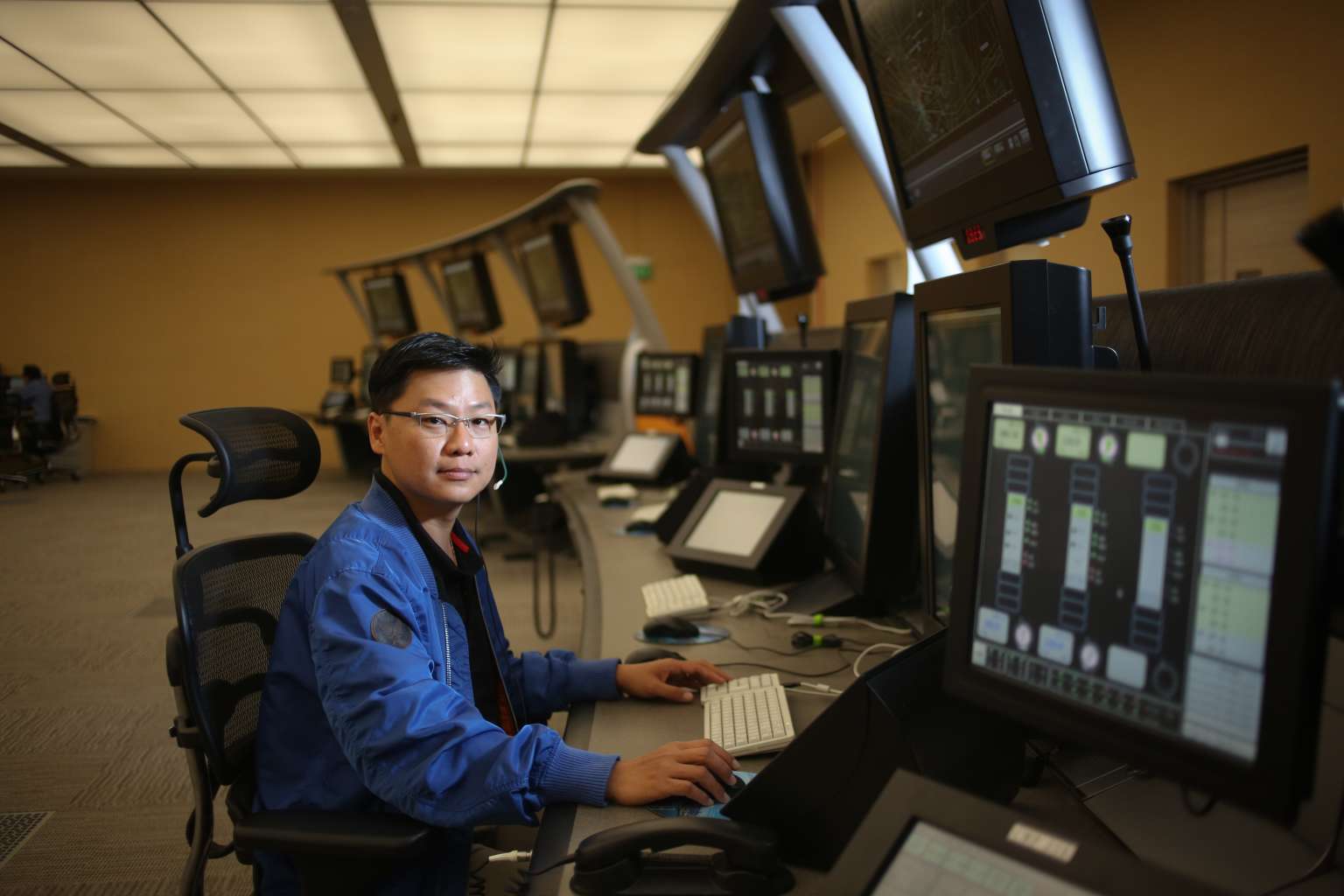Safe take-offs and landings: What it takes to do the job of an air traffic controller
Sign up now: Get ST's newsletters delivered to your inbox

Air traffic controller Anthony Ang.
ST PHOTO: ONG WEE JIN
Karamjit Kaur
Follow topic:
SINGAPORE - The Air Traffic Controllers Association - Singapore (ATCA-S) and Air Line Pilots Association - Singapore (ALPA-S) jointly organised a symposium on Friday (Oct 21) to facilitate dialogue and exchange of ideas between participants from 10 countries and territories including Singapore.
The gathering was held a day after the aviation community marked The International Day of the Air Traffic Controller.
The Straits Times looks at what it takes to keep close watch of flights coming in and out and those that overfly Singapore skies.
1. Who are Singapore's air traffic controllers?

There are 390 qualified air traffic controllers here. Here are some quick facts:
- One in four of those selected do not make it to the end of the training
- One in three air traffic controllers in Singapore is a woman
- The most junior is two months into the job, while the longest serving has been around for 43 years
- The youngest is 21 and the oldest 67 years old
To prepare for a growing number of flights, the Civil Aviation Authority of Singapore (CAAS) aims to ramp up headcount to about 600 air traffic controllers from 2020 onwards.
2. What exactly do they do?

Singapore air traffic controllers manage an area more than 1,000 times bigger than the Republic's own sovereign airspace. This includes parts of Indonesia and Malaysia.
Last year, they handled about 650,000 flights.
To help them manage stress, air traffic controllers who do nine-hour shifts take a 30-minute break every 1½ to two hours.
The work depends on the area of responsibility assigned. The duties are as follows:
- Aerodrome Stream: They are stationed at the control towers of Changi Airport and Seletar Airport where they provide air traffic control services to aircraft at the airports.
Their responsibilities include guiding aircraft on the ground with taxi instructions and issuing departure, enroute and landing clearances.
- Approach Stream: They are stationed at the Singapore Air Traffic Control Centre near Changi Village and provide air traffic control services to aircraft operating in the vicinity of the airport.
Their responsibilities include ensuring all arrival flights are at desired landing speeds and altitudes, and all departures are separated from the arrivals, and at an appropriate altitude.
- Area Stream: They are also stationed at the Singapore Air Traffic Control Centre and provide air traffic control services to all aircraft within the Singapore Flight Information Region.
Their responsibilities include ensuring aircraft within the air space managed by Singapore have the minimum separation distance while facilitating requests from pilots regarding changes to route and altitude of aircraft.
They are also responsible for ensuring coordination with neighbouring air navigation service providers on flights going in and out of Singapore-managed air space.
3. How does one qualify for the job?

To be selected, applicants must have tertiary qualifications - either a degree or a full-time local diploma. The actual course of study does not matter but they have to sit for a three-hour aptitude test, personality profiling and voice test and clear two rounds of interviews.
The aptitude test is to assess, among other qualities, the applicant's cognitive and psychomotor abilities. They are also presented with scenarios to determine if they can function under intense pressure and multi-task.
This is not a test of knowledge per se. The aim is also to assess the candidate's planning ability, alertness, short-term memory and ability to follow directions.
4. Are there other requirements?

Once selected, the training kicks off with a three-month course conducted by the Singapore Aviation Academy - the training arm of the CAAS - with 15 written exams.
Candidates are tested on topics covered under the Primary Air Traffic Control Course. These include aviation topics such as interpreting meteorological reports, aviation rules, basic aerodynamics, and basic radar theory.
The passing mark is 85 per cent for some papers and 70 per cent for the rest.
5. What kind of training is provided?

Training to be a full-fledged air traffic controller takes 3½ to four years. That's longer than the training for an airline pilot, which can take up to three years.
The training for an air traffic controllers comprises:
- Primary Air Traffic Control Course where new recruits gain basic aviation knowledge for the job. These include aviation topics such as interpreting meteorological reports, aviation rules, basic aerodynamics, and basic radar theory.
- Specialised Streams Training where recruits are placed into one of the three specialised streams namely:
* Aerodrome: To take care of landings and takeoffs
* Approach: To oversee flights as they make their descent into Singapore
* Area: To oversee flights further off within Singapore's area of responsibility
At this stage of the training, the recruits undergo theory and practical sessions in an air traffic control simulator at the Singapore Aviation Academy.
The training sessions will train the recruits on how to apply separation between aircraft, respond to emergency situations as well as working with other external agencies.
- On-the-job training where the recruits will be placed in a live operating environment working under the close supervision of a qualified instructor.

